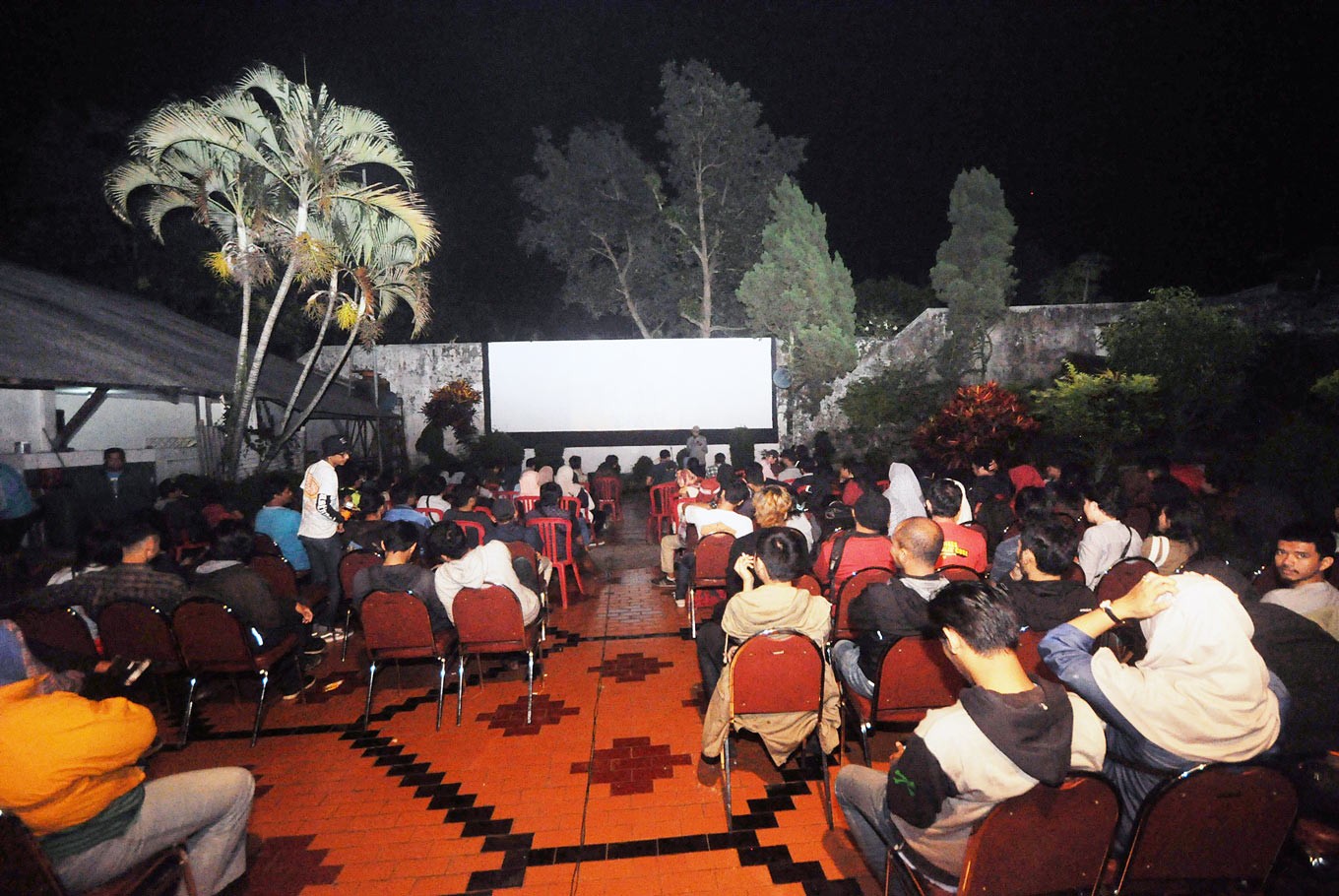Popular Reads
Top Results
Can't find what you're looking for?
View all search resultsPopular Reads
Top Results
Can't find what you're looking for?
View all search resultsHariadi: Tracing history through celluloid films
From a restaurant room in Malang, a mobile movie theater operator is trying to preserve the legacy of Indonesia’s movie history for the future digital-savvy generation.
Change text size
Gift Premium Articles
to Anyone
I
ndonesia’s traditional mobile movie theaters, commonly known as layar tancep, are desperately trying to survive potential extinction amid the rapid development of digital platforms.
Many layar tancep owners and operators have closed their businesses despite their best attempts to survive. One of them is Hariadi, 71, an operator based in Malang, East Java.
Hariadi remembered how the layar tancep business was so big during the 1970s and 1980s, a period considered the heyday of the Indonesian film industry.
“One producer even managed to turn out 52 titles a year,” Hariadi said in an interview recently.
During the heyday period, Hariadi owned 45 units of 16 mm projectors.
“I think there were at least 1,000 units operated by hundreds of traveling movie businessmen in East Java,” he said.
He explained that mobile movie shows catered to the demand for high quality movies for the people living in rural and suburban areas because movie theaters were only available in urban areas.
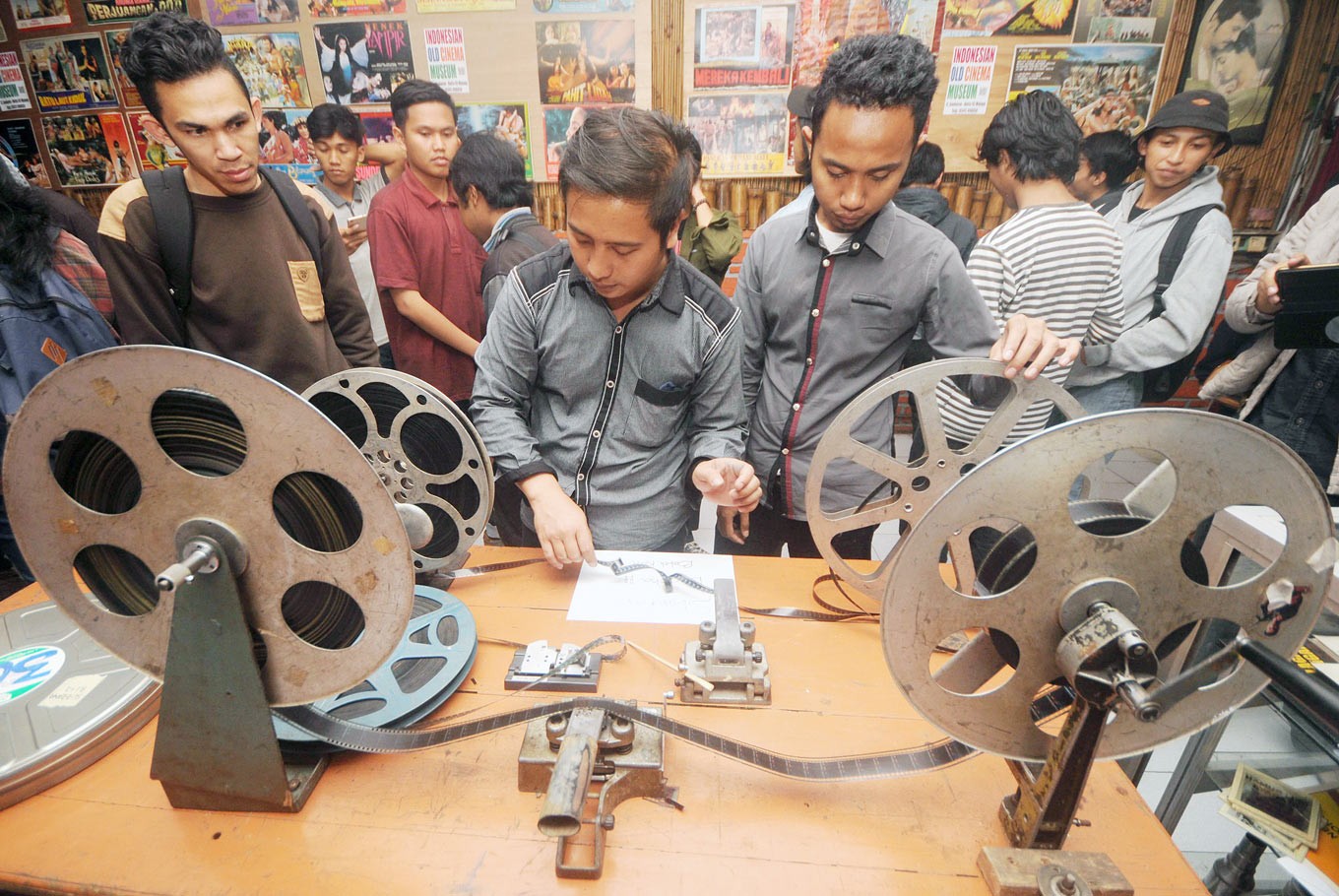 Try it out: Visitors can test a manual film roll re-winder.(JP/Nedi Putra AW)
Try it out: Visitors can test a manual film roll re-winder.(JP/Nedi Putra AW)
Furthermore, Indonesia at that time only had one television channel, the state-owned TVRI, which did not feature the latest released movies.
Shows at layar tancep were held outdoors, with ticket sellers placed inside the screening areas surrounded by gedek (bamboo walls).
Hariadi’s layar tancep was named “Cinedex 14”, with an admission price of just Rp 250 per person (1 US cent).
“We might be able to sell 1,000 tickets at the most but even if they were sold out, we could record double the attendance because many moviegoers managed to enter the theater by sneaking through the bamboo fences,” he said.
Action and legend movies were the favorites of the time.
Read also: Five classic and memorable Indonesian movies to watch
“But the films starring dangdut singer Rhoma Irama drew the biggest audiences,” said chairman of the Indonesian Mobile Movies Association (PERFIKI) of East Java.
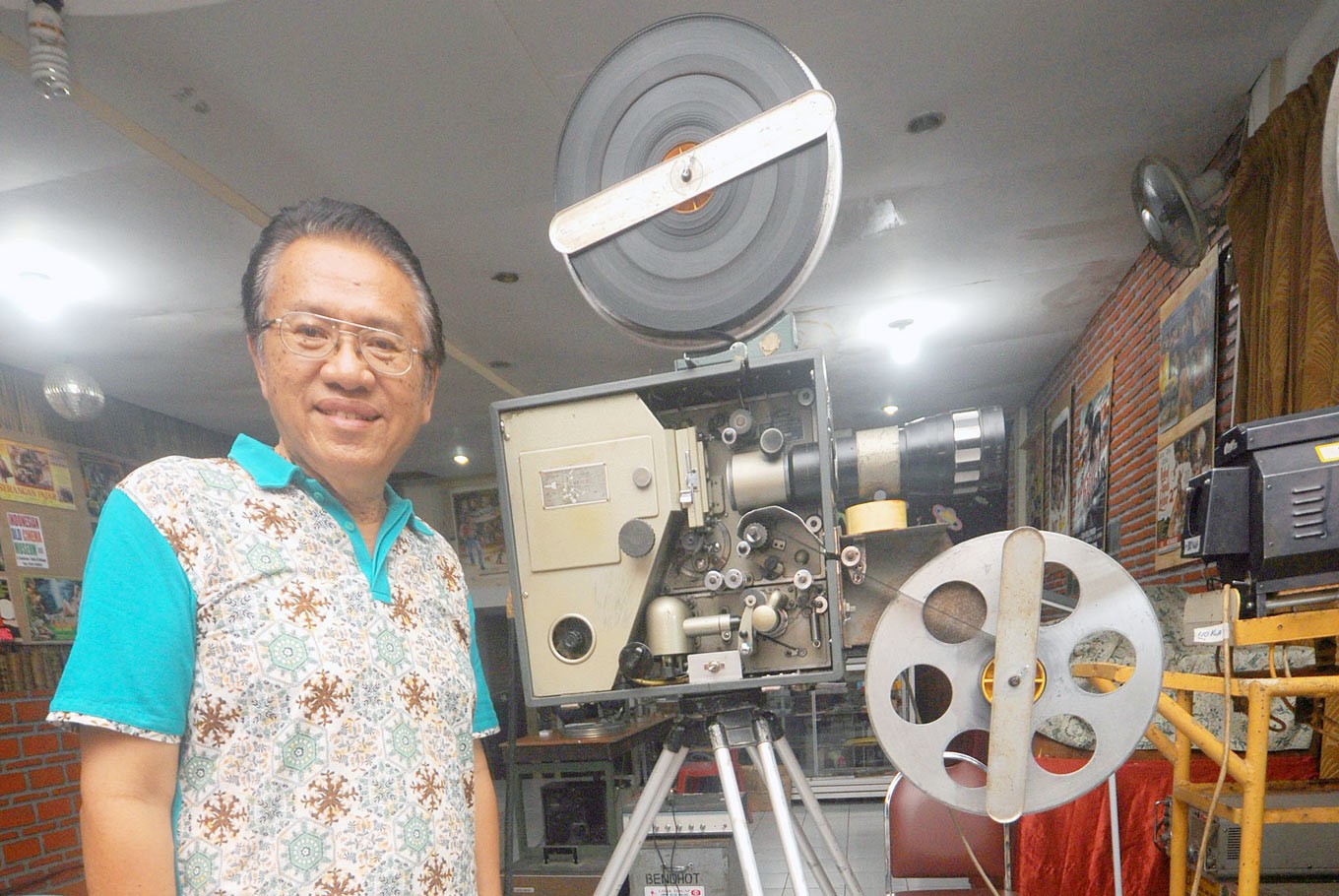 Historian: Hariadi wants to share his knowledge of analog films through his museum.(JP/Nedi Putra AW)
Historian: Hariadi wants to share his knowledge of analog films through his museum.(JP/Nedi Putra AW)
As a layar tancep operator, Hariadi and his crew had to give priority to equipment maintenance and celluloid film rolls.
Any mistakes with the film roll would force them to face the disappointment of spectators, often expressed in subtle vandalism.
“Various things would fly toward the screen and us, from sandals to plastic bags containing urine,” he recalled.
Hariadi and his crew had to pay attention to the weather too because sudden rain during outdoor screenings could disperse moviegoers in an instant.
The drawbacks and challenges, however, never discouraged Hariadi, who is also a fengshui expert.
Besides Malang and its vicinity, Hariadi also staged his shows in the then East Timor province during the early period of its integration into Indonesia.
His savings from this movie business operation enabled him to set up a restaurant on Jl. Soekarno Hatta 45 Malang, which is still open.
His love of films has been imitated by his niece, Livi Zheng, now a director, producer, and star of Brush With Danger, which managed to enter Hollywood.
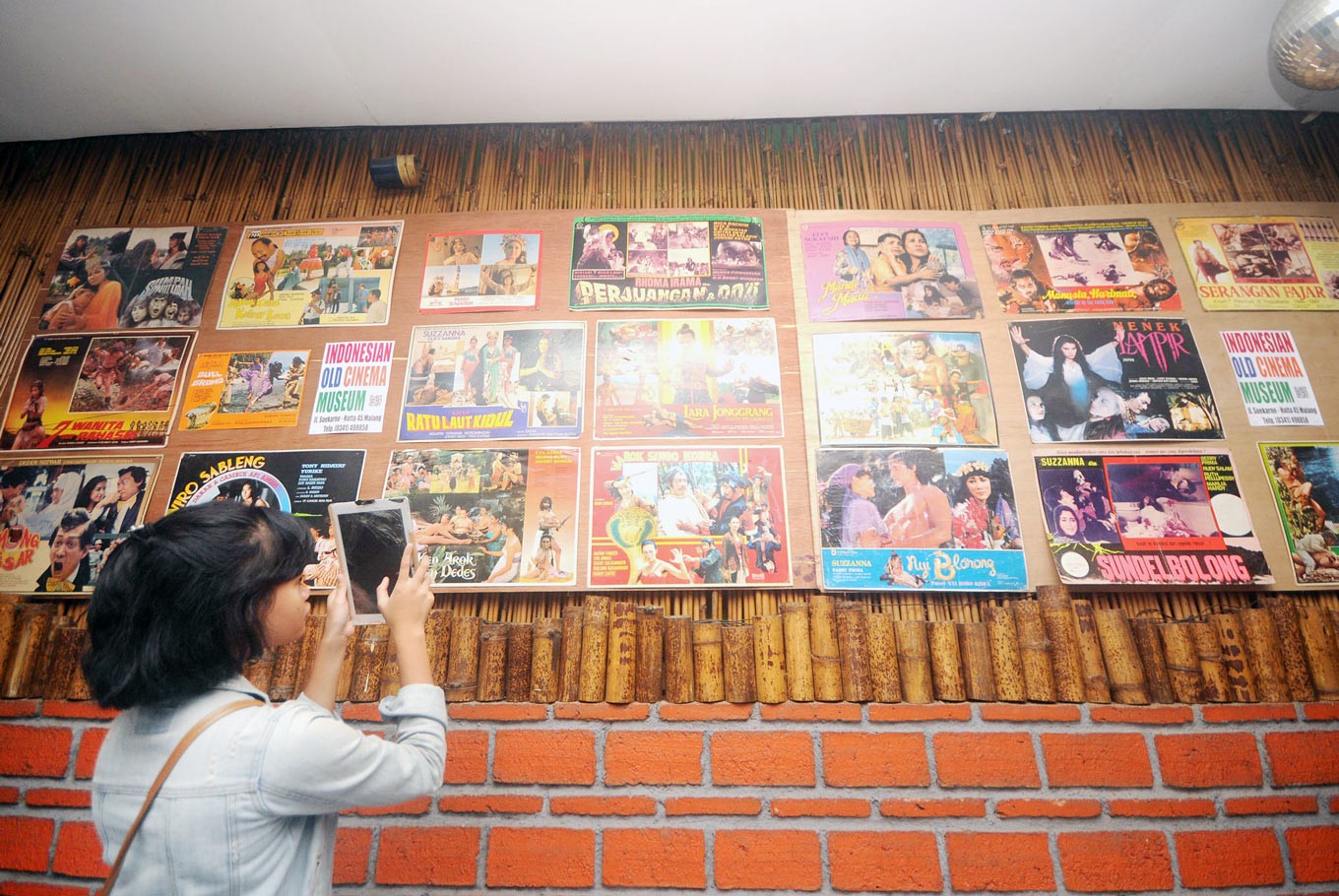 Blast from the past: A visitor takes pictures of old Indonesian film posters on the wall of Hariadi's Old Cinema Museum.(JP/Nedi Putra AW)
Blast from the past: A visitor takes pictures of old Indonesian film posters on the wall of Hariadi's Old Cinema Museum.(JP/Nedi Putra AW)
The emergence of private TV stations in the mid-1990s with their national and foreign film programs caused the decline of layar tancep, while the further growth of digitalization also made celluloid films outdated.
His old equipment like projectors, film rolls and posters were therefore left idle for decades.
As he examined his mobile theater collection, Hariadi finally decided to establish the Indonesian Old Cinema Museum in one of his restaurant rooms.
The museum, which officially opened in April, features an analog film collection that attracted Lensa Mata, a community of film lovers.
Hariadi then allowed the community to manage his museum.
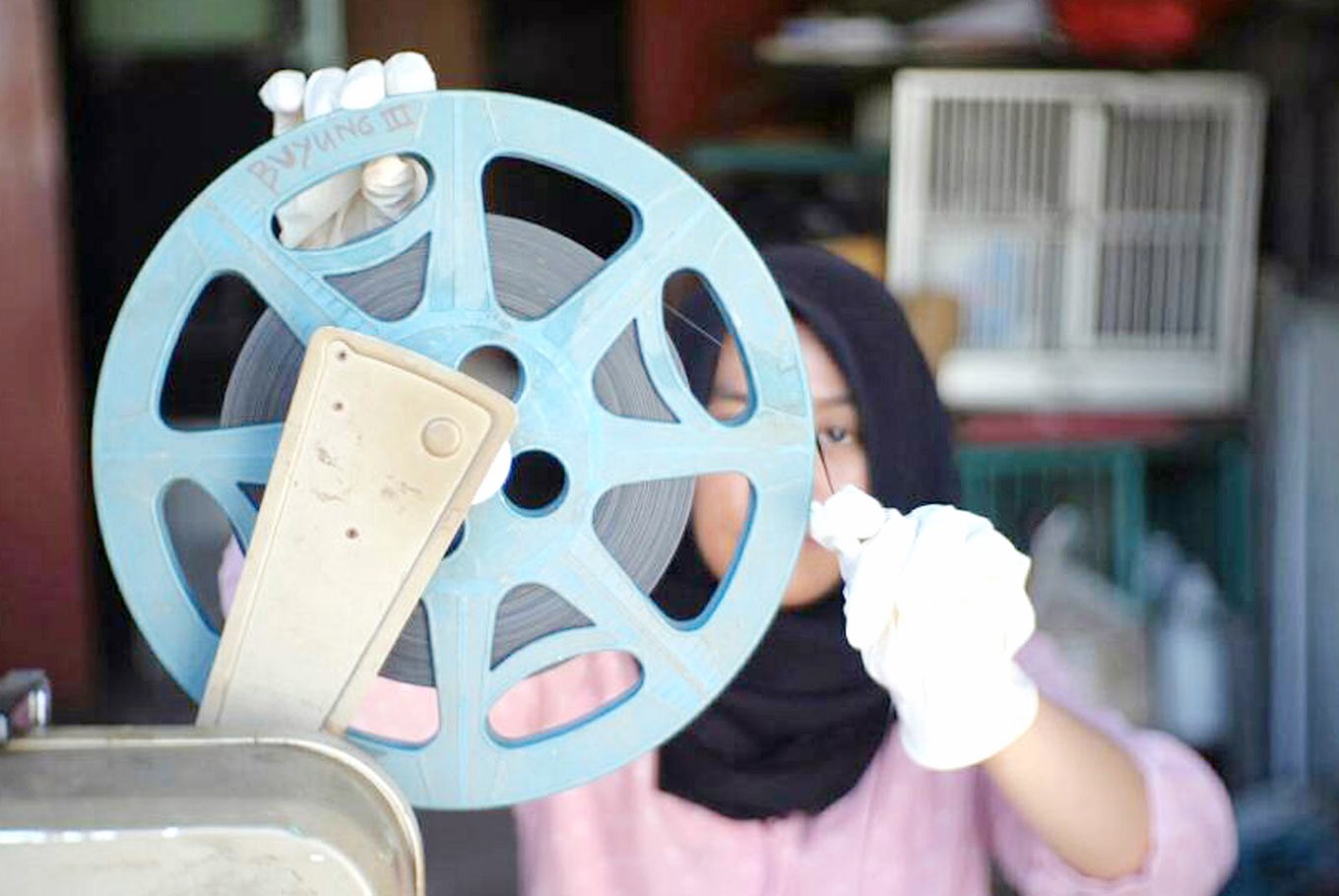 Maintenance: A Lensa Mata community member cleans and maintains Hariadi's movie equipment.(JP/Nedi Putra AW)
Maintenance: A Lensa Mata community member cleans and maintains Hariadi's movie equipment.(JP/Nedi Putra AW)
Hamzah Ismael, 22, from Lensa Mata, said plans had been drawn up to maintain the equipment and make a database of the entire collection to facilitate public access.
“We’re also screening celluloid films within and outside the museum,” Hamzah, who is also a student at the Muhammadiyah University in Malang, said.
As a member of the digital generation, Hamzah said he had begun to understand how films used to be shown at movie houses and how difficult it was to produce films.
The museum has also drawn the attention of Arfan Adhi Perdana, a film activist from Malang once involved in the digitalization process at the State Film Production Corporation.
Arfan suggested that Hariadi’s equipment should not be labeled a museum collection.
“I’m inclined to consider the activities here as attempts to preserve film,” he said.
“After the whole management system is properly established, the collection can then be opened to the public so that the information provided is really accurate.”

